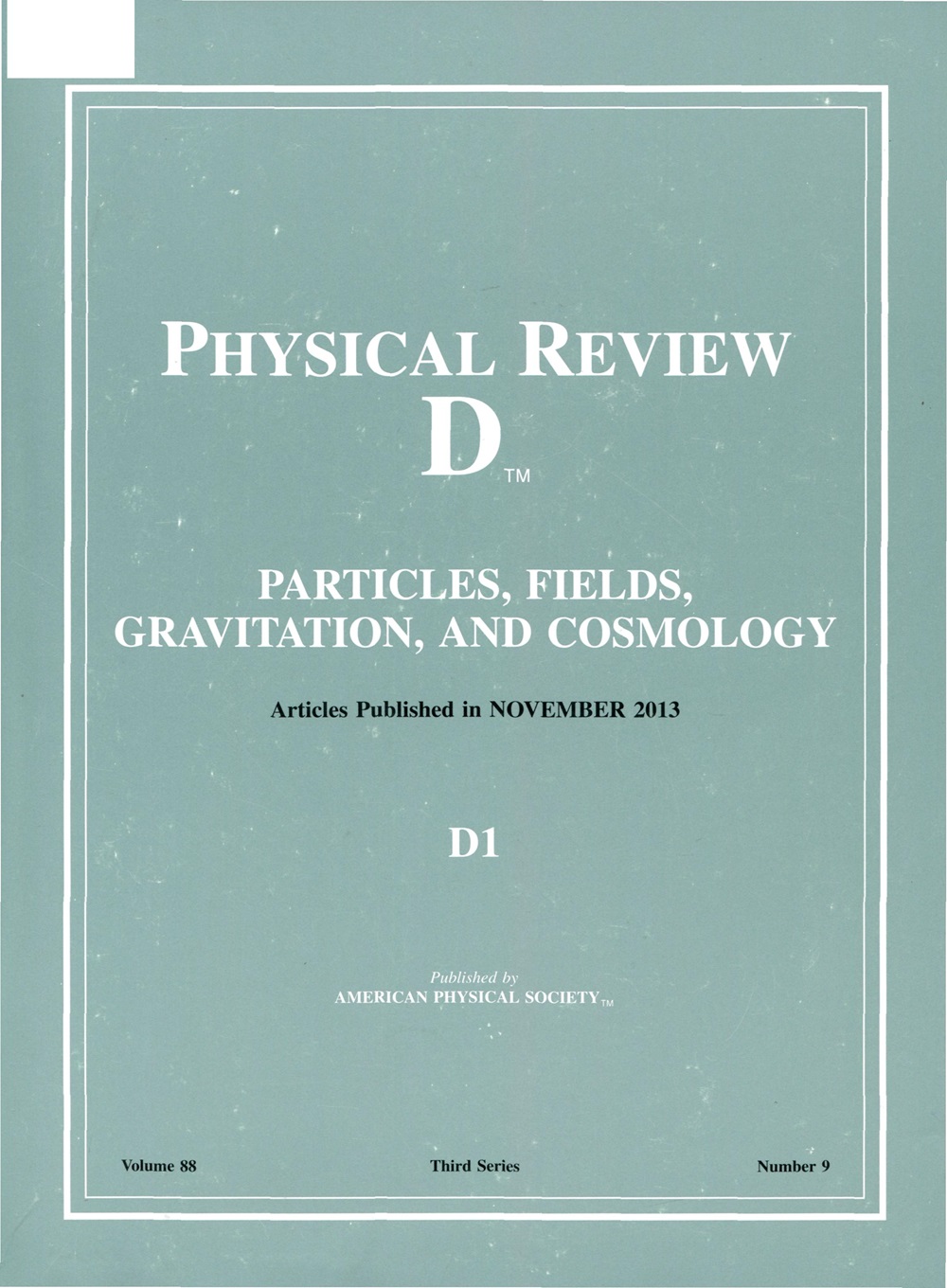Stepping up superradiance constraints on axions
IF 5
2区 物理与天体物理
Q1 Physics and Astronomy
引用次数: 0
Abstract
Light feebly-coupled bosonic particles can efficiently extract the rotational energy of rapidly spinning black holes on subastrophysical timescales via a phenomenon known as black hole superradiance. In the case of light axions, the feeble self-interactions of these particles can lead to a nonlinear coupled evolution of many superradiant quasibound states, dramatically altering the rate at which the black hole is spun down. In this work, we extend the study of axion superradiance to higher order states, solving for the first time the coupled evolution of all states with n≤5 in the fully relativistic limit (with加强对轴子的超辐射约束
光弱耦合玻色子粒子可以通过黑洞超辐射现象在亚天体物理时间尺度上有效地提取快速旋转黑洞的旋转能量。在光轴子的情况下,这些粒子微弱的自我相互作用会导致许多超辐射准束缚态的非线性耦合演化,极大地改变黑洞旋转的速度。在这项工作中,我们将轴子超辐度的研究扩展到更高阶态,首次求解了在全相对论极限下(以n为主量子数)n≤5的所有态的耦合演化。利用贝叶斯框架,我们利用太阳质量黑洞的推断自旋重新推导了轴子的约束,证明了以前采用的极限设置程序低估了轴子衰变常数fa的电流灵敏度,大约低估了一个数量级,并且包含到高阶态允许人们在更广泛的参数空间范围内合理地捕捉典型的高自旋黑洞的演化。从而允许约束扩展到更大质量的轴子。最后,我们对与x射线观测的自旋推断相关的系统学进行了广泛的讨论。2025年由美国物理学会出版
本文章由计算机程序翻译,如有差异,请以英文原文为准。
求助全文
约1分钟内获得全文
求助全文
来源期刊

Physical Review D
物理-天文与天体物理
CiteScore
9.20
自引率
36.00%
发文量
0
审稿时长
2 months
期刊介绍:
Physical Review D (PRD) is a leading journal in elementary particle physics, field theory, gravitation, and cosmology and is one of the top-cited journals in high-energy physics.
PRD covers experimental and theoretical results in all aspects of particle physics, field theory, gravitation and cosmology, including:
Particle physics experiments,
Electroweak interactions,
Strong interactions,
Lattice field theories, lattice QCD,
Beyond the standard model physics,
Phenomenological aspects of field theory, general methods,
Gravity, cosmology, cosmic rays,
Astrophysics and astroparticle physics,
General relativity,
Formal aspects of field theory, field theory in curved space,
String theory, quantum gravity, gauge/gravity duality.
 求助内容:
求助内容: 应助结果提醒方式:
应助结果提醒方式:


